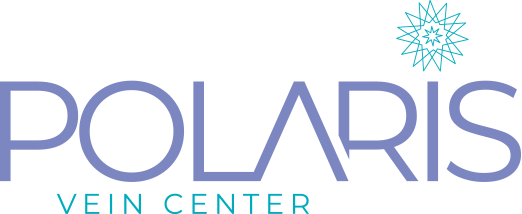How Do Veins Work?

The biology behind veins
Maybe you remember learning about veins in Biology class, or memorizing how arteries carry blood away from the heart (they both start with an “a”) and veins carry the blood back. Now that you’re older and paying more attention to your body you may want a refresher course, especially if you think you may have varicose veins in your legs.
How do veins work?
Blood is constantly moving through our bodies. Arteries transport oxygen and nutrient-rich blood from the heart to every part of the body. The blood flows from large arteries into smaller capillaries, which transport the oxygen and nutrients to the tissues and cells of the body.
Veins bring the blood back to the heart. Upon return, however, the blood contains waste products that first need to be cleaned out through the lungs and kidneys and reloaded with oxygen and nutrients. The veins and arteries work together to keep this continuous cycle going.
Knowing this, you can understand how much work it takes for veins to move blood upwards from the feet back to the heart, fighting gravity all the way.
There are 3 types of veins in the leg:
Superficial: Carry a small amount of blood to the perforating veins and deep veins
Perforating: Connect the superficial veins to the deep veins in your legs
Deep: Transport most of the blood in your legs back to your heart
How do veins move blood up the body?
As veins move blood by pushing it back up to the heart, they use a system of valves to regulate the flow and stop the blood from going in the wrong direction. When the calf muscles contract, the valves open and blood is pushed upward; when they relax, the valves close.
What is venus reflux?
Also known as venous insufficiency, venus reflux is a medical term used when malfunctioning vein valves no longer stop blood from flowing backwards, resulting in pooled blood in the leg. This occurs before varicose veins are visible.
How do you get varicose veins?
When a valve malfunctions, blood flows backwards and gets stuck in the vein. The pooled blood creates pressure which ultimately can cause varicose veins.
Do I need these veins?
No. Varicose veins no longer serve a purpose since they can’t carry blood back to the heart. In fact, once they are removed or closed overall circulation can improve.
What do varicose veins look like?
Commonly found on the legs, varicose veins may appear bulged, twisted or swollen, and can be blue or reddish-purple in color.
Do varicose veins hurt?
The built-up pressure in the veins can cause pain and discomfort. Varicose veins may feel warm and painful to the touch or like a deep ache within your leg muscles. Other symptoms include restless legs, itchiness, numbness, heaviness, cramping, throbbing, and more.
How are spider veins different from varicose veins?
Spider veins are a form of varicose veins, but are smaller and thinner and sit closer to the surface of the skin. They also occur due to failed vein valves, but they don’t usually cause any pain or discomfort and most people treat them for cosmetic reasons.
Can varicose veins be harmful?
If left, untreated varicose veins may worsen, leading to more serious problems like leg ulcers, blood clots, phlebitis, or skin discoloration.
Do varicose veins ever burst?
Varicose veins can rupture or burst if they are accidentally bumped or scratched. If so, the built-up pressure may cause blood to spurt out. This may look scary, but you can try to control the bleeding by applying pressure with a soft cloth and elevating your leg until the bleeding stops.
Can the valves in the leg veins be fixed?
There are surgical options to fix valve reflux, however, most varicose veins and spider veins can be treated with minimally invasive procedures that have a fast recovery time. Examples include sclerotherapy, Endovenous Laser Treatment, Radiofrequency Ablation and others. Here’s more information about varicose vein procedure options at Columbus Vein Center in Columbus, Ohio.
If you’ve noticed pronounced veins in your legs or you’re experiencing pain, swelling, or discomfort, you may have varicose veins. Schedule a free consultation to learn about the different vein treatments we offer and take the first step to looking and feeling better.

